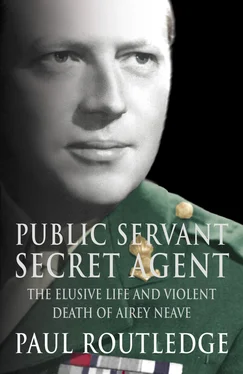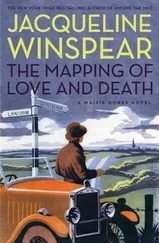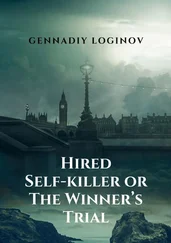Neave was sentenced to the usual twenty-eight days’ solitary confinement for his escape attempt. Several weeks elapsed before he could serve his term in Colditz town gaol, and he spent the time staring disconsolately from the British quarters as the weather turned colder. In early October he was taken under guard along the route by which he had tried to reach freedom. The sentries joked that the new white barrier at the final gate was a tribute to his audacious bid. His books and tobacco wrapped in a blanket, Neave was in no mood for entertainment.
Then, by his own account, he spotted another way out of the castle. Looking over the parapet of the moat bridge, he noticed a rough pathway leading across the tumbled stones of the dry moat towards the German married quarters. A small wicket gate stood half open in the moat bridge wall. If he could gain access to this gate, he was free of the barbed wire, with only a fence round the married quarters and a 12-foot high wall around the park beyond to negotiate. Excited, Neave crowed with delight, puzzling his guard with his air of elation. Neave’s version of events is contested by Pat Reid, who said he himself had spotted the small garden gate on his arrival at Colditz a year earlier. The energetic Dutch, always on the lookout for escape possibilities, also claimed to know of its existence.
Banged up in his municipal cell, Neave still thought of escape. The tiny barred window was beyond reach. He climbed on to the massive East European-style stove and contemplated cutting through the ceiling, breaking out of the roof and letting himself down to the gravel courtyard with a blanket rope. Thus occupied with thoughts of flight, he was surprised by the gaoler who roared with laughter: ‘So soon, Herr Leutnant! You must stay with us a few days longer.’ Next day, they moved him to a cell on the ground floor. He endured his spell of confinement remote from the worsening fortunes of the war, smoking on his bunk in the company of Jane Eyre and the Duchess of Wrexe. On his way back to the castle twenty-eight days later, he noticed again the little wicket gate, which by now appeared in his dreams as ‘the gateway to the land beyond the Blue Mountains’.
Some weeks earlier, Pat Reid had also had an inspiration. A trained engineer, he understood architectural drawings and had the happy knack of mentally being able to take buildings to pieces and put them back together again. It occurred to Reid that the wooden stage of the camp theatre, on the second floor of a building occupied by the most senior Allied officers, offered escape potential. It was constructed over a room leading to the top of the German guardhouse outside the prisoners’ courtyard. This corridor was sealed off from POW quarters by heavy locked doors and bricked-up windows, but it might be accessible from above. Together with ‘Hank’ Wardle MC, a Canadian in the RAF, he reconnoitred the theatre and found that by removing wooden steps from a dressing room he could move freely about under the heavy stage. There were no floorboards, only rubble on top of a lath-and-plaster ceiling over the corridor.
Reid and Wardle sawed a 2-foot square through the ceiling and found the room below disused and empty. To disguise their activity, they constructed an ingenious device known as ‘the shovewood’. This was a plaster-covered hatch fixed from above with turnbuckles resting on the ceiling joists. It was virtually invisible from below, and in any event no guards ever went there. This was Neave’s ‘magic entrance’. As Reinhold Eggers later lamented: ‘We had left the prisoners a very simple barrier, no more than a floor-ceiling between their quarters plus a door into a passage on our side to get through.’ 1 Reid clambered down on a rope made from a mattress cover, padded down the corridor in carpet slippers and picked the lock of the door. Beyond, a passage ran over the courtyard gate – the most difficult barrier to negotiate – and ended at another locked door. This yielded easily to his skills and Reid found himself at the top of steps leading into an attic above the guardhouse. The sounds of laughter and noisy drinking drifted up from the German Officers’ Mess below. If an escaper could disguise himself as a German officer, the guards at the gate would scarcely give him a second glance, because this time he would be approaching from the right direction.
What is more, the prisoners were planning to put on a Christmas pantomime within weeks, offering the perfect opportunity to mount an escape. Reid began a search for the right officers. He quickly whittled his list down to six, including Neave. He told them ‘casually’ that he could get them out of Colditz if they could acquire convincing German officers’ uniforms. Neave and Lieutenant John Hyde-Thomson, who had already tried to get out in a consignment of palliasses, were finally chosen to make the break, in company with two Dutch officers.
There were compelling reasons for cooperation with the Dutch. First, their command of German was much better than that of the British, second, their long blue-green army greatcoats bore a striking resemblance to the Wermacht uniform, and third, they were inveterate escapers. They had already made four ‘home runs’ via Switzerland. This Anglo-Dutch entente had been operating for some months through Reid and his opposite number, Captain van den Heuvel, invariably known as ‘Vandy’. He finally settled on a brave young officer of the Netherlands East Indies Army, Second Lieutenant Toni Luteyn, to accompany Neave. In 1940, the Dutch army had capitulated to the invading Germans. Its officers were required to sign an oath of non-combatance, or face internment for the rest of the war. Virtually all signed, with the exception of a contingent of sixty-seven colonial army cadets who had just passed out of Breda Military Academy. Luteyn, aged twenty-three, was one of them. He was interned in a camp at Zossi on the Dutch – German border, but when one of them escaped they were moved deeper inland to Oflag VIIIc in Poland. After more escapes, the whole lot was dispatched to Colditz in July 1941, arriving soon after Neave. Until now Neave and Luteyn had scarcely met. They were thrown together by calculation rather than friendship. Despite being the younger of the two – he was only twenty-four – Luteyn was the senior partner because of his command of German. ‘We had some exercises, because Neave did not speak German, except jawohl,’ Luteyn said years later, ‘but going through the guardroom there was quite a chance somebody would talk to us, and they would talk to the highest ranking officer. So I was “promoted” to Hauptmann and he was a first lieutenant. We practised that exercise for a week in the courtyard. He had to march on my left-hand side. If he didn’t wheel to my left, I shouted at him.’ 2
Meanwhile, both would-be escapers were rehearsing for the camp pantomime, Ballet Nonsense. Neave later dismissed the ‘pathetic futility’ of the entertainment, insisting that although such performances keep prisoners from brooding on their fate, the actual performances were ghastly. But at the time he threw himself energetically into the show, writing and producing a three-act sketch with the improbable title ‘The Mystery of Wombat College’, which was clearly based on his experiences at Eton. Neave played the principal character, the unpleasant headmaster Dr Calomel. The other parts were equally nasty, as befitted the obscene dialogue and cynical performance. The chaplains complained about the ‘unsuitability’ of the sketch and Neave thought it a ‘wretched little piece’ but it brought the house down in Oflag IVc.
A photograph of the full cast shows him striking a pose in gown and mortar board of black paper and steel-rimmed spectacles, made up to look like a beetle-browed, leering Groucho Marx. While Neave busied himself on stage, Reid and Wardle were hard at work beneath his feet creating the ‘shovewood’ escape route through which they planned to send several Anglo-Dutch teams. Neave and Luteyn would go first, followed twenty-four hours later by Hyde-Thomson and Luteyn’s fellow officer Lieutenant Donkers. At one point in rehearsals, when Neave was pacing the boards in a scene where Dr Calomel expels the son of a duke, Reid and Wardle emerged from beneath his feet, covered in dust.
Читать дальше












